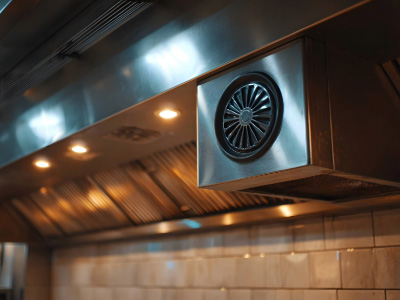Air Handling Units play a vital role in infection control in hospitals
Air Handling Units (AHUs) circulate air in commercial buildings, cleaning pollutants and regulating temperature.

Air Handling Units: Key in Hospital Infection Prevention
Just about every commercial building will utilise Air Handling Units (AHUs), their function being to circulate the air around a building and to both clean it of all potential pollutants and regulate temperature.
The AHU contained within a ventilation system allows the mixing of fresh air extracted from outside of the building with recovered, recirculated air. As well as maintaining an efficient balance of these two streams, the units modify it to ensure that it has no contamination and that it is delivered at the optimum temperature.
Are there any applications where air purification is quite as vital as in a medical environment?
Probably not. Removal of contamination of any sort (physical or microbial) is essential when it comes to hospitals being able to provide the best possible conditions for infection-free recovery. Add to this the fact that the very nature of these facilities mean that infections will undoubtedly be present somewhere, and it becomes easy to see why Air Handling Units can be a main focus of attention when it comes to infection control.
As well as purifying the incoming air, the AHUs other role is to direct the flow around the building in a way that will avoid any cross-contamination – i.e. from clean areas to those where there is more potential of contamination being present. This means that there is a constant need to know that the system is operating efficiently and is able to remove all of the potentially harmful pollutants from the recirculated air.
Will dirty air handling units provide dirty air?
Yes, they will. If the Air Handling Unit itself isn’t clean it is entirely possible that it will become a source of contamination for any air passing through it.
Dirt and debris build up over time, especially in the more intricate areas. This can then simply be picked up by the flow and distributed throughout the entire system, including those places where air purity is of paramount importance, such as Intensive Care Units.
And if bacteria has been allowed to thrive in the lower-flow sections of the unit then this too can be dissipated wherever the air is delivered. At a time when elimination of COVID-19 is top of the agenda in any setting - but most especially in our medical facilities - the consequences of dirty air handling units ‘cultivating’ undesirable bacteria could be very serious indeed.
Can Air Handling Units be operated entirely safely in a pandemic?
With the application of a recognised, high-quality maintenance regime, yes they can. Regular and effective inspection, sampling, cleaning and disinfection will significantly minimise the risk of contamination and allow them to perform their essential duty in a safe and effective way (not to mention have a potentially extended lifetime).
At System Hygienics clean air is our business and we take our responsibilities very seriously. If you would like to find out more about the services we offer for our existing clients’ peace of mind and the expertise we have across all areas of air hygiene, including COVID-19 prevention, then visit https://www.systemhygienics.co.uk


.png)
.png)